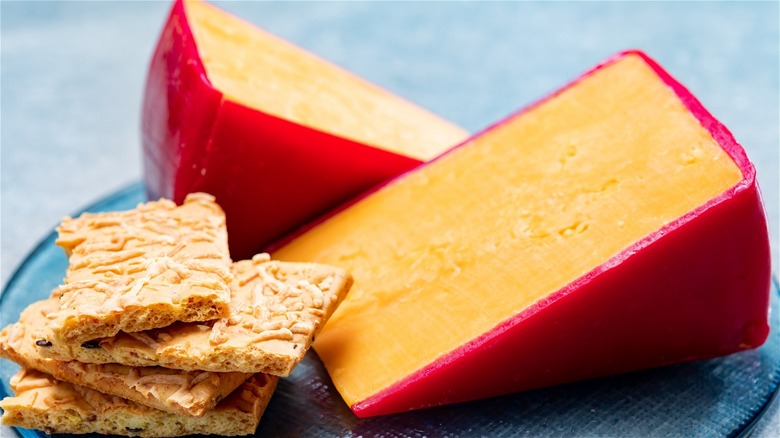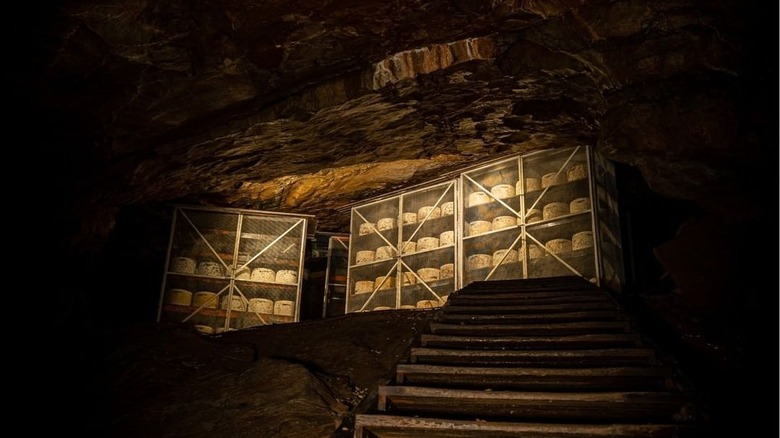King Henry II Bought An Absurd Amount Of Cheddar In Prehistoric Caves
It may not seem like the environment most conducive to food production, but, surprisingly, many cheeses are traditionally made in caves. According to Wisconsin Cheese, some modern cheeses you may find aged the old fashioned way (i.e., in caves) are parmesans, goudas, cheddars, and specialty Swiss cheeses like Gruyère. If you're a fan of high-end blue cheese, Roquefort, aka "the king of cheeses," then you've certainly eaten cave-aged cheese before (per Amusing Planet). The cheese is ripened in natural limestone caves in the south of France in the village of Roquefort-sur-Soulzon.
And there's certainly cheddar being aged in caves. Just ask the Cheddar Gorge Cheese Company of Cheddar, England (per Food & Wine). It ages its cheddar cheese in historic cheese-aging caves. The small town in Somerset in southwestern England is home to the original cheddar cheese and is the namesake of the food we know today (per Britannica).
English cheese caves
The cheese is aged in Cheddar Gorge (per BBC Travel). Like those that age Roquefort in France, these are limestone caves (per Britannica). These prehistoric caves have aged cheese for nearly a thousand years and their dairy products have been enjoyed by kings for nearly as long (per Food & Wine). Though the cheese wasn't known as Cheddar until around 1500, it was already famous in the 1100s, when King Henry II ordered 10,000 pounds of cheese aged in these ancient caverns. Considering Henry II was king of a large part of the cheesemaking holy land of France as well, this must have been some pretty good English cheese to warrant such a large order (per Britannica).
According to Luke Shepherd, one of the cheesemakers behind the Cheddar Gorge Cheese Company, which currently operates the caves, the secret's in the caves. "All cheesemakers try to emulate what the cave does," Shepherd tells Food & Wine. The caves maintain a fridge-like 52 degrees Fahrenheit year-round and an unwavering 100% humidity. And that consistency is important. "One or two degrees and the humidity can make a massive difference to the texture and the quality of the cheese," says Shepherd. The current users of the caves allow their cheese to mature in the middle of the cave system near the roof of the cave. This protects the cheese from any flooding of the underground river that runs through the cavern system. Shepherd says, "[The cave] allows the cultures within the body of the cheese to bloom more quickly."

